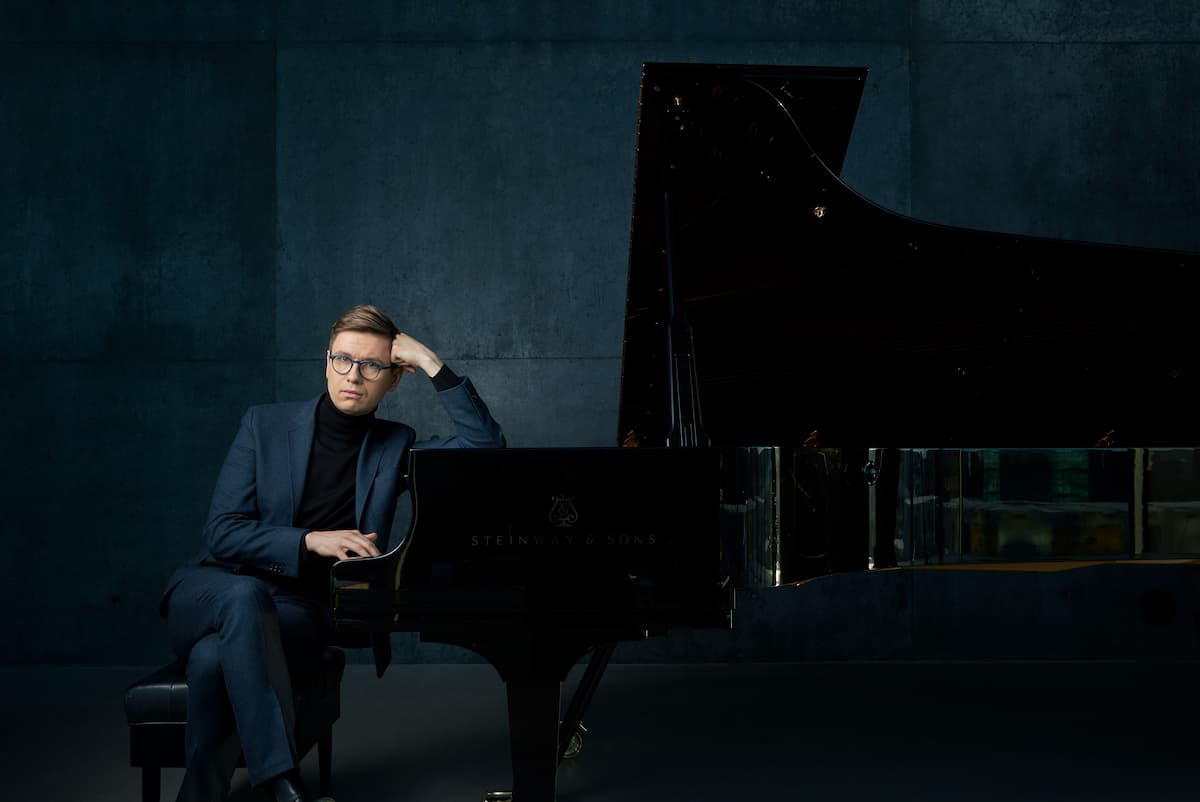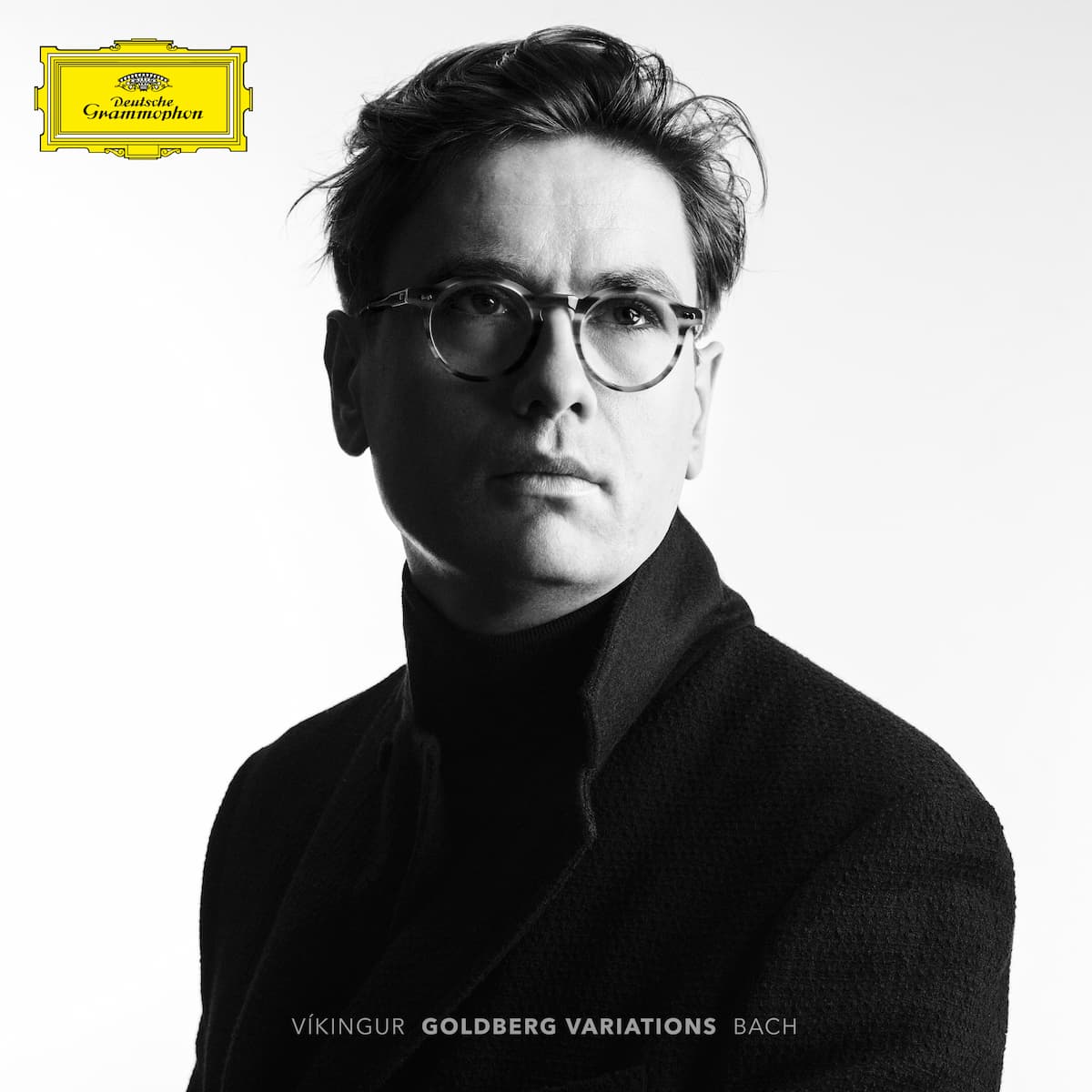One of Víkingur Ólafsson‘s performances, as part of his Goldbergs world tour, took place at Saffron Hall (Cambridgeshire, UK) on November 11th. This was his second and last appearance in the UK.
I believe one should be mentally and emotionally prepared before attending any concert dedicated to the Goldberg Variations by J.S. Bach, so profound is the subject.

Vikingur Ólafsson © Ari Magg
Like many, I had great expectations, so I made myself ready in such way that his recording released earlier, in October 2023, would not skew my understanding.
I had a few crucial questions that I had formulated in my head before the event. They were, however, general enough to apply to any attempt of making these Goldbergs universal and unique at the same time.
– How do we see the organisation of the whole edifice, and the sequence of variations?
– How can the piano, as a medium, be emphasised, and at what specific points in particular?
– What role does Ólafsson play in relation to the composer? Is he rather a faithful recreator of the spirit of the score, or does he allow himself some personal fantasy?
– What kind of emotions does he seek to arouse in the listener?
– Does he carry out a philosophical message?
– Is he committed to the path of the sacred?
I confess that I was left a little disappointed at the end of the concert, as none of the questions posed could be satisfactorily answered.
It was almost impossible for me to visualise the whole edifice enhanced by its key points, such as the not so obvious relationship between Variations 13 and 15, and the succession of variations in terms of self-imposed pauses or non-silences was far from organic. For example, Ólafsson played variations 26 to 30 without any disruption, while 27 itself must constitute a pause before the final ride. Such set up has created an unbalanced tension.
J.S. Bach: Goldberg Variations, BWV 988 – Variatio 15. Canone alla Quinta. a 1 Clav. (Víkingur Ólafsson, piano)
I expected more from the use of the piano as a medium, knowing the extraordinary technical ability of the performer. Variation 25, titled ‘The Black Pearl’ by Wanda Landowska, is the place where the pianist could produce the most stunning palette of sounds, made of differentiated timbres, colours, and dynamics that his ‘alter ego’ allows him to use, referring to Liszt‘s expression. Pavel Kolesnikov, for example, has fully understood this, but Ólafsson disappointed me there. Even Lang Lang, despite his digressions into tasteless romanticism, was able to exploit the piano with superior imagination. For once and for all, it must be said that the piano has earned one’s spurs, and does not look pale in comparison with the harpsichord. The contrary applies.
Vikingur Ólafsson’s seriousness and concentration at the keyboard, not to mention his expressiveness, both facial and bodily impermeability, could easily lead one to believe that he was entirely at the composer’s service while allowing himself a measured personal creativity. This was not false, but not entirely true either. For example, the rhythmic fluctuation he allowed himself in the aria and in the aria da capo was shocking. There is no justification in either case for a kind of improvisation that is out of place, to say the least. On the other hand, I appreciated his choice not to overdo added ornamentation in the repeats. His sobriety deserves high marks.
J.S. Bach: Goldberg Variations, BWV 988 – Aria da capo (Víkingur Ólafsson, piano)
Olfasson has not accurately defined the types of dances that Bach sometimes used in the second degree. Where is the Passepied that follows the first part of Variation 16? Why so much speed in number 1, thus destroying any desire to dance? What is about the specific character of numbers 4 and 7?
J.S. Bach: Goldberg Variations, BWV 988 – Variatio 4. a 1 Clav. (Víkingur Ólafsson, piano)
The emotional outcome was a bit chaotic. Above all, we were unable to build up a progression of purified sentiments that made the abstract concept of infinity eventually real. In this somewhat disordered collage of feelings, however, gems such as Variation 15 emerged, whose substance of a philosophical nature was dense, and propelled by a sustained discourse.
The overall mystical aspect of this masterpiece is therefore lacking. However, some might object that such depth of reading is not obvious, given that Bach himself has revealed, albeit enigmatically, that the work’s sole vocation is to entertain the mind of connoisseurs.
Pierre Tran, November 2023
 Pierre Tran is a piano teacher who runs a private studio in the UK. He published a revised edition of the Goldberg by J.S. Bach along with commentaries in May 2020. This work is based on history, musicology and the art of interpretation, not forgetting pedagogical advices.
Pierre Tran is a piano teacher who runs a private studio in the UK. He published a revised edition of the Goldberg by J.S. Bach along with commentaries in May 2020. This work is based on history, musicology and the art of interpretation, not forgetting pedagogical advices.
https://goldbergvariation.com/
For more of the best in classical music, sign up for our E-Newsletter






Your review is wildly at variance with the reviews of other critics and musicians, for whom Olafsson’s Goldberg Variations are the new acme. Read, for example, The Gramophone. Personally, I found his performance in the recording to be both thrilling and deeply satisfying.